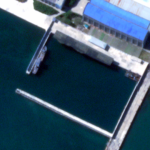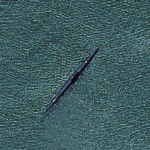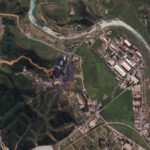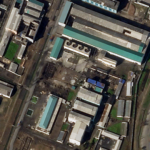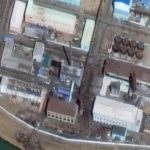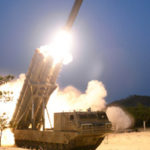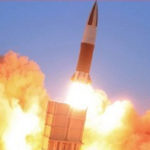October 5, 2020, by Joseph S. Bermudez Jr. and Victor Cha—
With the upcoming Korean Workers’ Party Foundation Day celebration on October 10, a SLBM test should not be ruled out as a possibility for Kim Jong-un’s self-proclaimed “October surprise.” Such a test would be consistent with Beyond Parallel historical data that shows heightened provocations around U.S. presidential election years.
September 23, 2020, by Victor Cha—
Over the course of 30 elections since 1956, Beyond Parallel measured the period of time before or after an election in which a North Korean provocation happens and found the provocation window has grown more narrow over time. That is, North Korean missile/nuclear tests and other major kinetic provocations have clustered increasingly closer to U.S. elections.
September 4, 2020, by Joseph S. Bermudez Jr. and Victor Cha—
A satellite image of the Sinpo South Shipyard acquired on September 4, 2020 shows some activity within the secure boat basin that is suggestive, but not conclusive, of preparations for an upcoming test of a Pukguksong-3 submarine launched ballistic missile (SLBM) from the submersible test stand barge based here.
August 27, 2020, by Joseph S. Bermudez Jr., Victor Cha and Bonny Lee—
The Pyongsan Uranium Concentrate Plant represents a critical component of North Korea’s nuclear research and weapons development programs. Through analysis of 100+ medium- and high-resolution declassified and commercial satellite images, this report aims to provide a new and unique look into the facility. It is also the second publication in a series analyzing North Korea’s uranium concentrate plants as well as one of the most comprehensive collections of unclassified information and satellite imagery presently available of the Pyongsan facility.
June 16, 2020, by Joseph S. Bermudez Jr. and Victor Cha—
The latest undertaking at the Hungnam Fertilizer Complex, one of North Korea’s oldest and largest chemical complexes, is the construction of a small “liquid nutrient fertilizer factory.” The construction and future operation of this new liquid nutrient fertilizer factory is a further manifestation of the continuing efforts under Kim Jong-un to increase agricultural production by expanding and diversifying domestic fertilizer production capabilities.
June 5, 2020, by Victor Cha and Ami Bera—
The unexplained periodic absences of North Korean leader Kim Jong Un over the past two months are troubling. Presumed health ailments for this obese smoker and drinker could leave his nuclear-armed dictatorship potentially leaderless overnight... A version of this op-ed appeared online on June 1, 2020 in The Washington Post.…
May 29, 2020, by Joseph S. Bermudez Jr. and Victor Cha—
The Pyongsan Uranium Concentrate Plant (38.318369 N, 126.432360 E) is located in Pyongsan-gun (평산군, Pyongsan County), Hwangbuk-do (황북, North Hwanghae Province), approximately 45 kilometers from the DMZ and 96 kilometers northwest of Seoul—the capital of South Korea. Since approximately 1990 it has occupied an critical role in the Democratic People’s Republic of Korea’s (North Korea) nuclear research and weapons programs as the sole known provider of uranium oxide (yellowcake) to these programs for fuel fabrication or enrichment.
March 30, 2020, by Victor Cha—
On March 29, 2020 at 6:10 am KST, North Korea launched two projectiles speculated to be short-range ballistic missiles from the Wonsan area in Kangwon province into the sea between Korea and Japan. The missiles traveled a distance of 230 kilometers (143 miles) and reached a peak altitude of 30 kilometers (19 miles). An announcement published in North Korean state media the following day confirmed that the two missiles were launched as part of super-large multiple rocket launcher tests. It also stated the test was carried out by the Academy of Defence Science.
March 23, 2020, by Victor Cha and Dana Kim—
On March 21, 2020 North Korea launched two projectiles from Sonchon county in North Pyongan province towards the East Sea. The launches took place 5 minutes apart at 6:45am and 6:50am KST, respectively. The projectiles traveled a distance of 410km (255 miles) at a maximum altitude of 50km (31 miles) and closely resemble the KN-24 short-range ballistic missile system. This is the third event of Q1 in 2020, which is equivalent to the number of missile provocations in Q1 of 2017 during the “Fire and Fury” era.
March 2, 2020, by Victor Cha and Dana Kim—
On March 2, 2020 at 12:37pm (KST), North Korea launched two short-range projectiles from the Wonsan, Kangwon Province area towards the East Sea. The projectiles traveled a distance of 240km (150 miles) at a maximum altitude of 35km (22 miles) with a 20-second interval between the two launches. While the exact type and model of the projectiles are yet to be confirmed, considering the nature of the test they may be SRBMs or new surface-to-surface missiles. The short interval time also indicates that the event may have been a multiple rocket launcher system test.
